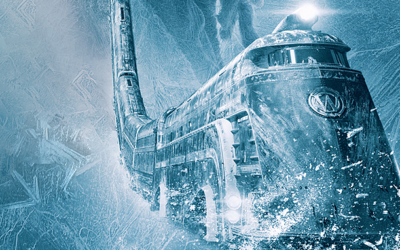How do you measure the immeasurable? Estimate something that seems impossible to even guess at?
In Marvel’s Champions #11 (available at your local comic shop or digitally at Comixology), while searching for survivors in Hydra-ravaged Las Vegas, the Hulk (Amadeus Cho) starts rattling off a mantra-like math problem. As it’s written, it flows like a stream of consciousness type of thing from the Hulk – he’s calculating how much space there is under the wreckage based on the number of cars present.
The Hulk’s calculation goes like this:
There are pockets beneath the wreckage due to cars. There were probably about 212,500 cars in Las Vegas when the attack happened, based on 1.8 cars per household, plus those belonging to tourists.
As Hulk figures, probably a third of those cars exploded due to rubble impacting them. Each of those exploding cars would have roughly six gallons of gasoline in its tank. Six gallons of gasoline contain 400,000 Newtons of energy per tank (120.3 mega joules, or 33.4 KWH). When fully combusted in an explosion, would push everything near it out to a ten-foot radius. That, according to the Hulk, will create some space in which survivors could be found.
Given the Hulk’s emotional state while searching for survivors (he grows more and more upset as they realize there are none), it would be easy to pass this three-panel bit of dialogue off as nervous banter. A kid in Hulk form realizing that despite his brains and brawn, he can’t fix everything or save everyone. That’s certainly part of it, but the kind of problem the Hulk is solving has a special name and is well known in physics and mathematics. It’s a Fermi Question or Fermi Problem.
Named after legendary physicist Enrico Fermi, these types of problems seek to emulate what Fermi something for which Fermi was famous – back of the envelope calculations. These are the types of problems that Neil deGrasse Tyson, Phil Plait or Brian Cox excel at – and make us all think they’re wizards when they riff off an answer to a seemingly impossible question using little or no data.
Among numerous other accomplishments, Fermi created the first nuclear reactor (Chicago Pile-1), worked on the Manhattan Project, was present for the first atomic bomb test at Trinity, and laid the groundwork for much of modern particle physics. Fermi won numerous awards during his lifetime, including a Nobel Prize in 1938, and is the namesake of the Fermi National Accelerator Laboratory (Fermilab) and Fermium, element number 100 on the periodic table.
Fermi would amaze people with his casual, almost simplistic estimation of incredible things, including the magnitude of the Trinity test on July 16th, 1945. To do so, he dropped strips of paper into the bomb’s blast wave and later paced out how far they were blown by the explosion. From that, Fermi calculated the bomb’s yield as 10 kilotons of TNT, which was remarkably close to the actual yield of 18.6 kilotons.
When you’re talking about atomic bombs, the difference between 10 and 18.6 kilotons, especially when measured by dropping strips of paper is fairly trivial.
Fermi problems are given to students as exercises in approximation and dimensional analysis (converting one unit into another into another and into another until you reach the unit you’re looking for), and are often the stereotypical “nightmare problems” that can serve as nightmare fodder long after they’ve left school.
A famous Fermi problem, as explained by Professor David Heffland in his book, A Survival Guide to the Misinformation Age: Scientific Habits of Mind, is simple in its framing: “How many piano tuners are there in New York City?”
No Googling the answer, no calculator, no Yellow Pages, nothing. Answer it.
Seems impossible, right?
Let’s follow Heffland’s outline for solving the problem:
What do you need to know and can easily estimate?
- The population of New York: about 8 million
- The time it takes to tune a piano: about 2 hours
- The frequency of a piano needing to be tuned: about 1/year
- Working days in a year: 365 – 104 (weekend days) – 15 (holidays) – 20 (vacation) = about 226 days
The accuracy of the numbers is all over the place. The population is pretty good, but obviously, the days worked could be higher or lower by a large number of days, and some piano owners will want their pianos tuned more or less than our suggested once per year. No problem. The overestimates and underestimates will cancel each other out.
What don’t you know and have to really ballpark?
- How many pianos are there per person in New York? There’s no way to look it up. But – is it zero? No. Does every person have one? No. Ballparking a little more, Heffland estimates that 1% of the people living in New York have pianos, about 80,000, which he rounds up to 100,000 (and this includes concert halls, music schools and other locations – if he’s wrong about 100,000 Heffland explains, its only by 1%, which is not significant).
And now, you’ve got everything you need to get an estimation that’s good to a factor of two…or even ten. This isn’t going to be a specific answer – it’s an estimation, a reasonable one at that.
So – running the math:
100,000 pianos x 1 tuning/year x 2 hours/tuning x 1day/8 hours x 1 year/226 days = roughly 111 tuners. Or, given that this is an estimation, there are probably about 100 piano tuners in New York City. Some might be part-time, which could bump the number up to 200, but that’s about it as far as orders of magnitude (multiples of ten) go. Thousands of tuners? There’s not enough business. Ten tuners? There’s waaaaay too many pianos for them to tune.
A veteran Columbia professor of Astronomy (deGrasse Tyson was one of his students) Heffland frames the idea of Fermi problems as something that an interviewer could legitimately ask one of his students on a job interview – and the student better be able to answer it if they want the better jobs.
Fermi problems are also well known to high school students across the United States given their presence in Science Olympiad, Odyssey of the Mind and other academic tournaments.
But Fermi problems aren’t just for trivial stuff or torturing the smart kids in academic contests. Using limited data, scientists often use the techniques used with Fermi problems to answer a question prior to using more precise tools and methods (read: more expensive) to give an idea of what the answer should look like.
So – in showing the Hulk solving a Fermi problem in his head, Champions writer Mark Waid was putting Amadeus Cho on the same company as Enrico Fermi, who would do the same. But in the case of the Hulk in the ruins of Las Vegas, the Fermi problem is a defense mechanism. It’s a nice touch of characterization that shows Hulk was most likely trying to do something, anything to keep his brain so busy that it wouldn’t start going down the deep, dark spiral of calculating how many people had died in Hydra’s attack.
It was a deeply disturbing moment, but one that showed a very human side of the Hulk.
More:
How should mathematics be taught to non-mathematicians?
A primer on solving Fermi problems along with a list of Fermi problems








